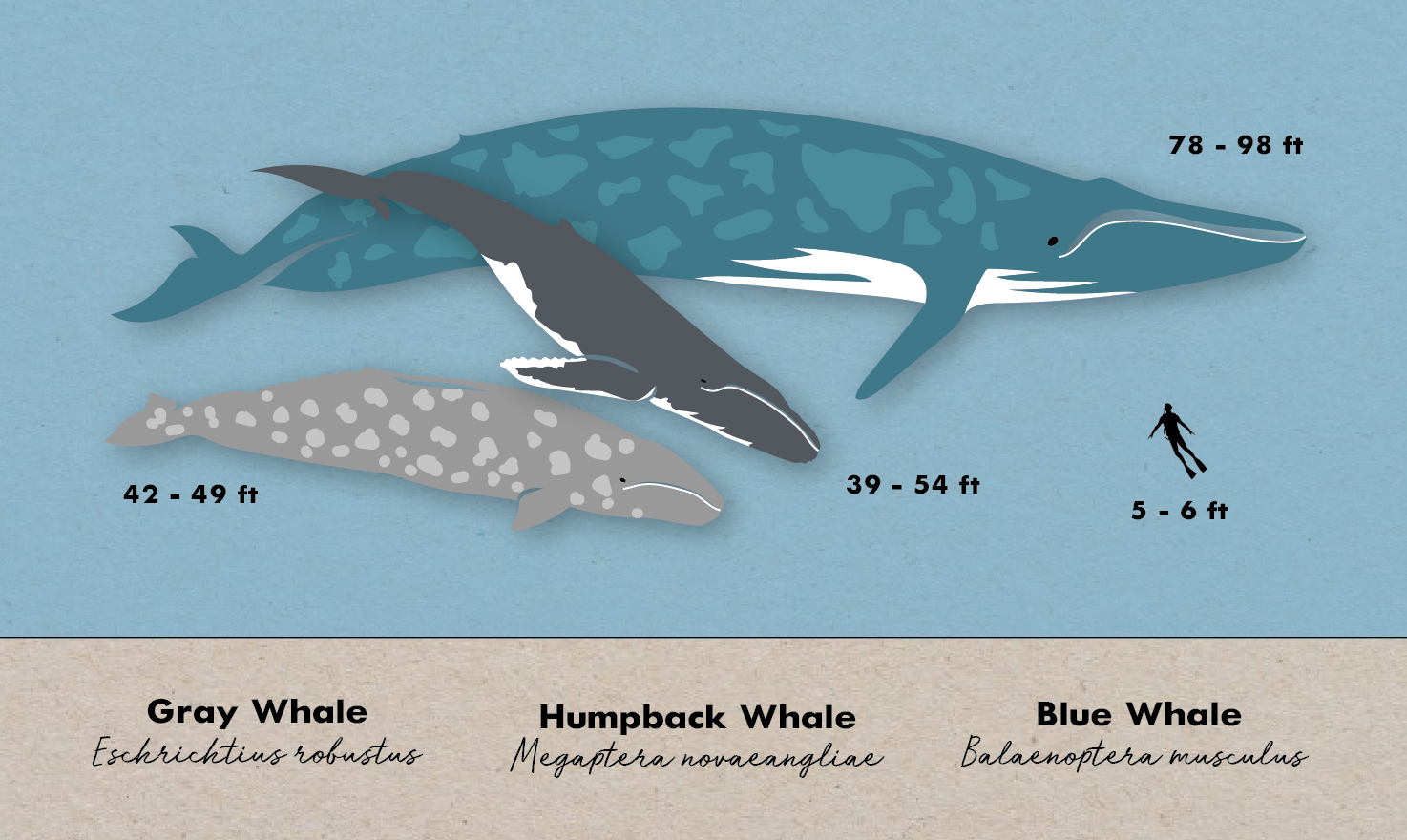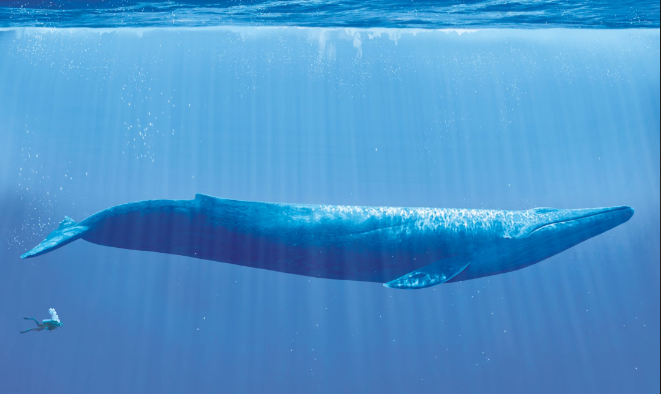Blue Whale Compared to Human: Exploring the Astonishing Size Disparity
The blue whale, Earth's largest known creature, and humans, the dominant species, exhibit an incredible contrast in size. In this article, we will delve into the fascinating comparison between the awe-inspiring blue whale and the comparatively smaller human, shedding light on the remarkable dimensions and implications of this size disparity.

Gray whale, humpback whale and blue whale
1. Blue Whale: A Marine Giant
The blue whale (Balaenoptera musculus) is a marine mammal that holds the title of being the largest animal to have ever existed on Earth.
With an average length of 82 to 105 feet (25 to 32 meters) and a weight ranging from 100 to 200 tons, the blue whale's size is nothing short of astounding.
2. Human: The Dominant Species
Humans, Homo sapiens, represent the dominant species on Earth.
With an average height of around 5.6 feet (1.7 meters) for males and 5.2 feet (1.6 meters) for females, humans stand in stark contrast to the immense proportions of the blue whale.
3. Length Comparison
When comparing the length of a blue whale to that of a human, the difference is mind-boggling.
An average blue whale can be up to 20 times longer than a human's average height, emphasizing the grandeur of these marine giants.
4. Weight Disparity
The weight discrepancy between a blue whale and a human is equally staggering.
Blue whales can weigh as much as 200 tons, which is equivalent to around 400,000 pounds. In comparison, the average weight of a human is roughly 137 pounds.
5. Heart and Aorta Size
The size difference extends to specific anatomical features.
For instance, a blue whale's heart can be as large as a small car, with an estimated weight of around 1,300 pounds. In contrast, a human heart is a fraction of this size, fitting snugly within the chest.
6. Evolutionary and Ecological Significance
The vast size of the blue whale is a product of millions of years of evolution in the marine environment.
Their immense size is advantageous for survival in the open ocean, aiding in thermoregulation, energy storage, and diving capabilities.
7. Conservation Concerns
Despite their size, blue whales are not invulnerable.
They face numerous threats, including ship strikes, entanglement in fishing gear, and habitat degradation.
Conservation efforts are crucial to ensure the survival of these magnificent creatures.
8. Human-Blue Whale Relationship
The comparison between humans and blue whales underscores the diversity of life on our planet.
While humans dominate land and have made significant technological advancements, blue whales thrive in the depths of the oceans, contributing to the overall balance of marine ecosystems.

Blue whale
The comparison between the blue whale and humans highlights the astonishing diversity of life on Earth. The blue whale's colossal size serves as a reminder of the vastness and intricacy of the natural world. As we marvel at the grandeur of the blue whale and recognize our own significance as a species, it's imperative to respect and protect the planet's biodiversity. Understanding the size disparity between the blue whale and humans encourages us to appreciate the beauty of the world we share and reinforces the importance of conservation efforts to preserve the delicate balance of life.